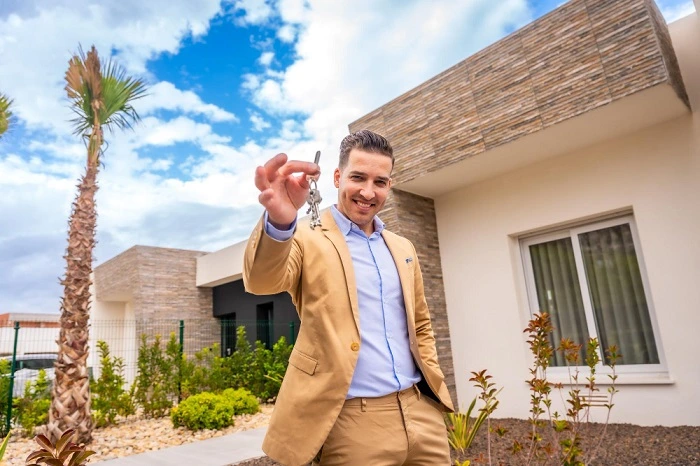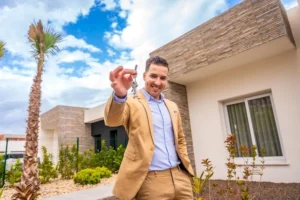Investing in real estate remains one of the favorite strategies for Spaniards to protect their assets and generate passive income. But the big question arises: Is it profitable to buy a second home to rent out? The answer depends on factors such as location, taxation, maintenance costs, and investment strategy.
Below, we'll explore the advantages and disadvantages in detail, including how much you pay to the Treasury for owning a second property, what profitability is considered acceptable in the rental market, and practical tips for maximizing your investment.
Advantages and disadvantages of buying a second home to rent
Before making a purchase, it's a good idea to carefully weigh the pros and cons of your decision.
Advantages
- Recurring income: Owning a rental property guarantees a monthly income that can supplement a salary, a pension, or even become a primary source of income.
- Revaluation of the propertyIn dynamic markets, housing not only generates income, but can also increase in value over time. Coastal cities, provincial capitals, and tourist destinations offer high potential for appreciation.
- Asset diversificationCompared to other more volatile assets, such as the stock market or cryptocurrencies, real estate is perceived as a more stable and tangible investment.
- Tax advantages for long-term rentalsIn certain cases, landlords may apply tax reductions to income earned, especially if it is used as the tenant's primary residence.
Disadvantages
- High initial investment: Buying a second home requires a significant outlay, both in capital and associated expenses (notary, taxes, management, appraisal, etc.).
- Demanding taxation: Owners must declare rental income, pay property tax (IBI), and assume real estate income imputations when the property is not rented.
- Risk of default: Lease arrears are one of the main concerns for landlords.
- Maintenance costs: insurance, repairs, community and possible levies reduce net profitability.
- Limited liquidityUnlike other financial assets, selling a home to recover equity can take months or even years.
How much do you have to pay to the Treasury for a second home?
One of the most critical aspects is understanding taxation. Buying a second home entails obligations that affect whether the property is rented or not.
- Property Tax (IBI): It is mandatory to pay it every year and its amount varies depending on the municipality.
- Rental Income DeclarationIncome from leasing must be included in the income tax return. It is taxed as income from real estate capital.
- Deductions and deductible expenses: The owner can deduct certain expenses, such as mortgage interest, insurance, property tax, community fees, necessary repairs, or professional services.
- Reduction for rent of habitual residence: Currently, a significant reduction in net income is permitted when the rental is for primary residence, although the percentage depends on the regulations in force each year.
- Imputation of real estate income: If the property is not rented, the Treasury charges a theoretical income (between 1.1% and 2% of the cadastral value).
In purchase and sale transactions, the following must also be considered:
- Property Transfer Tax (ITP) in second-hand housing.
- VAT and AJD (Documented Legal Acts) in new construction homes.
- Municipal capital gains and capital gains in the Personal Income Tax in case of subsequent sale at a profit.
What is considered a good return for a rental?
The profitability of a property is measured on two levels:
- Gross profitability: annual rental income / purchase price x 100.
- Net profitability: annual income less all expenses (IBI, insurance, community, repairs, etc.) divided by the purchase price x 100.
In Spain, the average gross profitability of a rental property is around 6% According to data from the Bank of Spain, although it can vary widely depending on the location:
- Big cities like Madrid or Barcelona: returns between 4% and 5% due to the high purchase price.
- Medium-sized cities and metropolitan areas: between 6% and 7%.
- Coastal or tourist locations with high vacation demand: in some cases they may exceed 8%.
As a general rule, a net profitability of between 4% and 7%Below 3%, risks and obligations usually outweigh the benefits.
Tips to maximize the profitability of a second home
Buying with the intention of renting requires strategy. These tips can make the difference between a mediocre investment and a highly profitable one:
- Choose a location with sustained demand: Investing in areas with a high concentration of employment, universities, or tourist attractions ensures higher occupancy and shorter empty periods.
- Analyze the housing typologySmall apartments (one or two bedrooms) tend to have higher turnover and relative profitability than large homes.
- Compare tourist and long-term rentalsAlthough vacation rentals can offer higher incomes, they involve more management, specific regulations, and higher tenant turnover.
- Reform with criteriaSmall improvements like painting, modernizing bathrooms, or replacing windows can significantly increase the rental value without blowing your budget.
- Have professional advice: Relying on real estate agencies or experts allows you to adjust market prices, filter solvent tenants, and optimize taxation.
- Diversify into higher-end housing: Investing in exclusive properties can open the door to high-net-worth tenants. For those looking for a qualitative leap, the range of luxury houses It is an interesting way to maximize profitability and asset prestige.
- Control taxation: Knowing the details of deductible expenses and applicable reductions prevents overpaying taxes and improves net income.
Risk factors to consider
Although investing in a second home is attractive, it is not without risks:
- Legislative changesRental regulations in Spain have recently changed, especially regarding contracts, deposits, and price limits. It's a good idea to stay up-to-date.
- Real estate market cycles: Periods of bubble and correction can affect both revaluation and liquidity.
- Growing competitionThe rise of vacation rental platforms has intensified supply in many areas.
- Financial costs: Interest rates directly influence the cost of a mortgage and, therefore, the real profitability.


